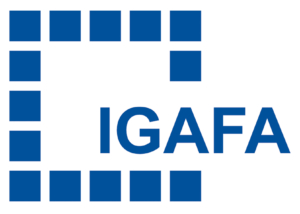BAM Vortragsreihe WISSENSCHAFT MIT WIRKUNG: Topology & Chirality
| Topic | Topology and Chirality |
| Presenter | Prof. Dr. Claudia Felser Director and Scientific Member at the Max Planck Institute for Chemical Physics of Solids, Dresden |
| Summary | Topology, a mathematical concept, recently became a hot and truly transdisciplinary topic in condensed matter physics, solid state chemistry and materials science. All 200 000 inorganic materials were recently classified into trivial and topological materials: topological insulators, Dirac, Weyl and nodal-line semimetals, and topological metals [1]. The direct connection between real space: atoms, valence electrons, bonds and orbitals, and reciprocal space: bands and Fermi surfaces allows for a simple classification of topological materials in a single particle picture. More than 25% of all inorganic compounds host topological bands, which opens also an infinitive play-ground for chemistry [1,2]. Beyond Weyl and Dirac, new fermions can be identified in compounds that have linear and quadratic 3-, 6- and 8- band crossings that are stabilized by space group symmetries [3]. Crystals of chiral topological materials CoSi, AlPt and RhSi were investigated by angle resolved photoemission and show giant unusual helicoid Fermi arcs with topological charges (Chern numbers) of ±2 [4]. In agreement with the chiral crystal structure two different chiral surface states are observed. A quantized circular photogalvanic effect is theoretically possible in Weyl semimetals. However, in the multifold fermions with opposite chiralities where Weyl points can stay at different energies, a net topological charge can be generated. [5]. However, chirality is also of interest for chemists [6], especially because of the excellent catalytic performance of the new chiral Fermions AlPt and PdGa [7]. The open question is the interplay between Berry curvature, chirality, orbital moment and surface states. |
| Language | English |
| Link-Registration | Webex |
- Bradlyn et al., Nature 547 298, (2017), Vergniory, et al., Nature 566 480 (2019), Xu et al. Nature 586 (2020) 702.
2. Nitesh Kumar, Satya N. Guin, Kaustuv Manna, Chandra Shekhar, and Claudia Felser, doi.org/10.1021/acs.chemrev.0c00732
3. Bradlyn, et al., Science 353, aaf5037A (2016)
4. Sanchez et al., Nature 567 (2019) 500, Schröter et al., Nature Physics 15 (2019) 759, Schröter Science 369 (2020) 179, Sessi et al, Nature Communications 11 (2020) 3507, Yao et al., Nature Communications 11 (2020) 2033
5. Dylan Rees, et al., Science Advances 6 (2020) eaba0509, Congcong Le, Yang Zhang, Claudia Felser, Yan Sun, Physical Review B 102 (2020) 121111(R), Zhuoliang Ni, et al., npj Quantum Materials volume 5 (2020) 96, Zhuoliang Ni, et al.,, Nature Communications 12 (2021) 154
6. B. Yan, et al., Nature Com. 6 (2015) 10167, Guowei Li and Claudia Felser, APL 116 (2020) 070501.
7. Qun Yang, et al., Advanced Materials 32 (2020) 1908518, Guowei Li, to be published
